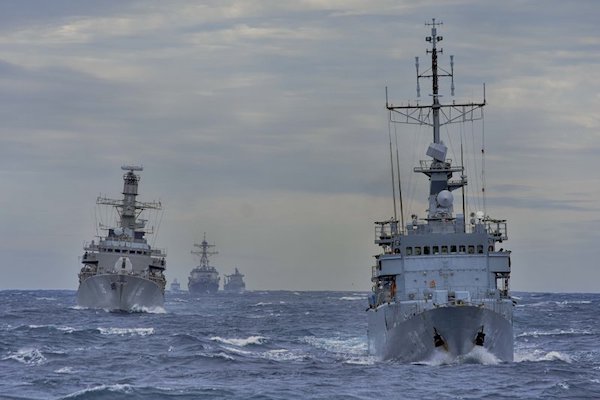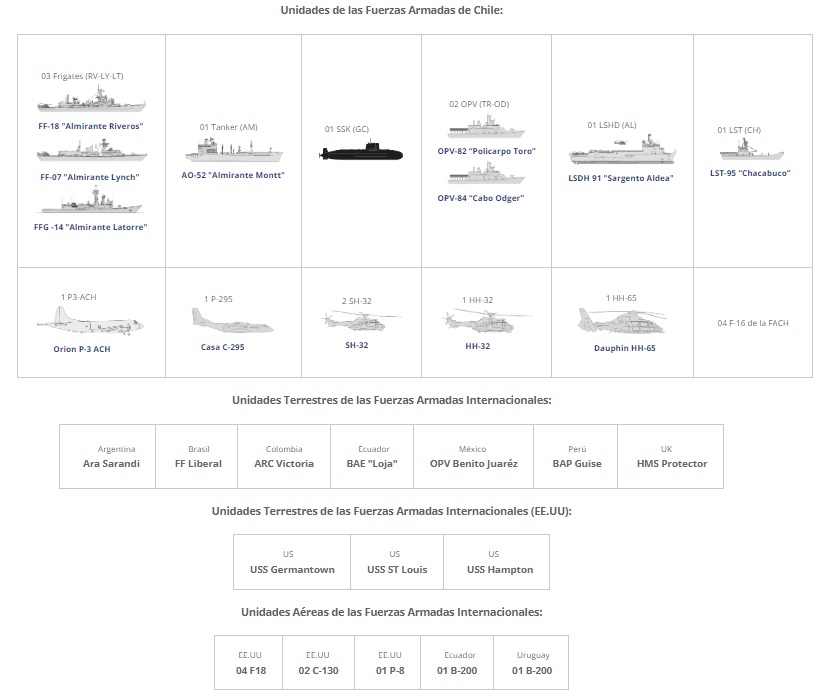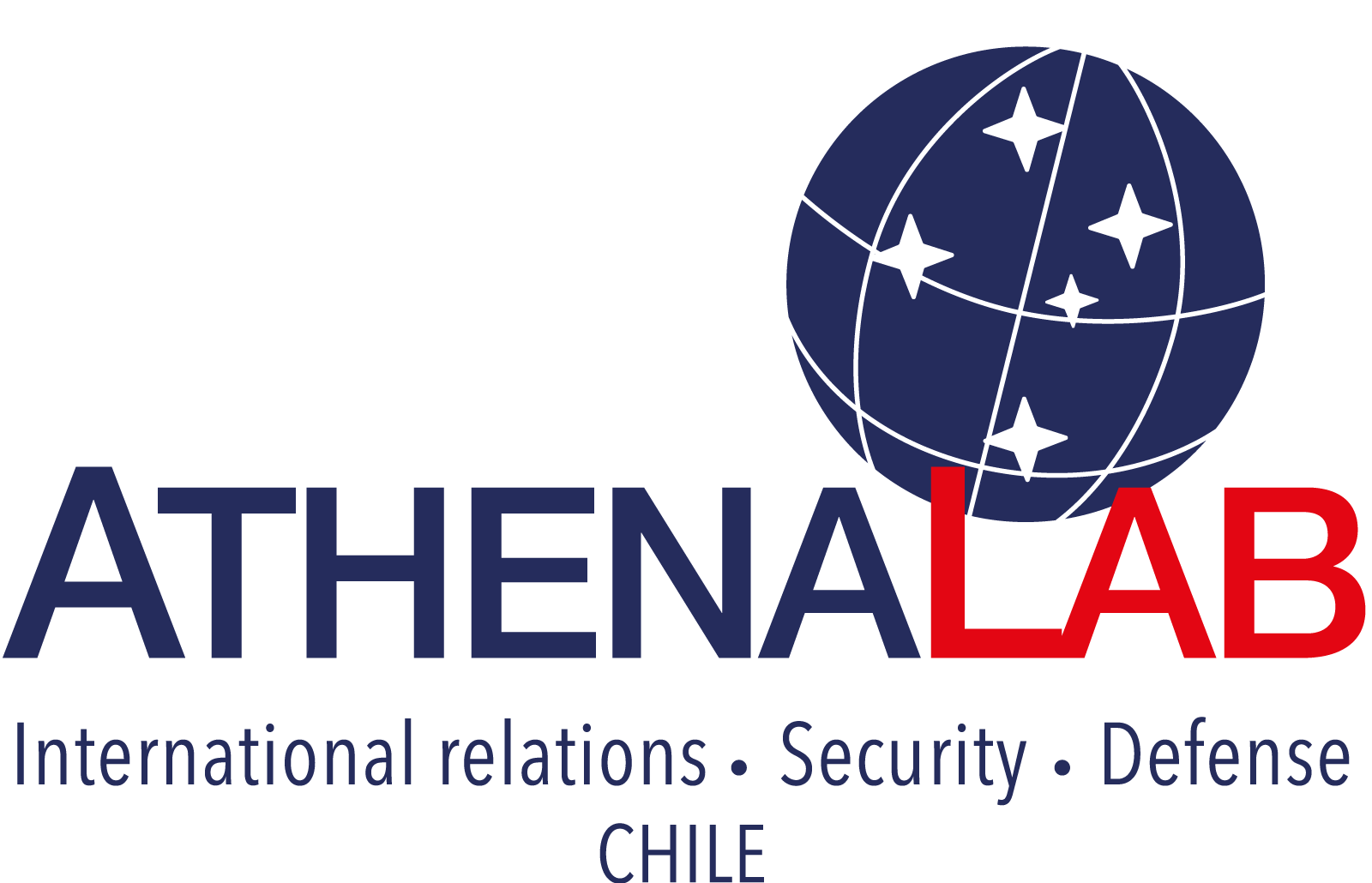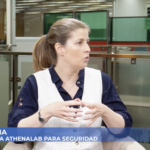
UNITAS 2019 (Chilean Navy)
On the coasts of Chile, a fleet of 19 ships will meet next month in the context of Operation UNITAS, the largest naval exercise in the Americas, which was created 65 years ago to improve hemispheric defense against the threat of Soviet submarines. That reality may sound distant now, but it is closer than we think, since although history does not repeat itself, it does at least rhyme.
In mid-June, a Russian nuclear-powered submarine and other ships from that country reached Cuba. Although the Russian Navy is not even a shadow of that of the Soviet Union (a global force capable of giving Western navies quite the headache), today we see the authoritarian regimes of Moscow and Havana just as aligned as in 1962 and with intentions of causing discomfort in the Americas.
As much as they say that these are routine visits for the sake of naval diplomacy, it is highly unusual that barely six weeks later (at the end of July), a second flotilla from Moscow crossed the Atlantic again to make its presence known in the Caribbean. After all, these warships are from a country that invades other nations – as we saw in Ukraine – and supports disruptive partners – from North Korea to Venezuela.
Within the framework of the Inter-American Treaty of Reciprocal Assistance (Tratado Interamericano de Asistencia Recíproca, TIAR) and previous experiences of combined work between the US Navy and Latin American navies in World War II (1939-1945) and the Korean War (1950-1953), Operation UNITAS’ original spirit seems to have gained new vigor, as dangerous extracontinental forces are once again becoming a recurring presence.
In 2023, two circumnavigating Iranian Navy ships crossed the Strait of Magellan and visited Brazil. At the end of the tour, an Iranian admiral announced that the next step would be to build a base in Antarctica.
To some this point may seem alarmist, considering that this year ships from the navies of Italy and France – the latter with territories in South America and the Caribbean – have also sailed along the American coasts. However, it is important to emphasize that Moscow and Tehran do not respect freedom of navigation, an absolute principle that, when put in jeopardy anywhere, has consequences everywhere.
With their direct or indirect actions (such as Tehran’s support for the Houthi rebels, and attempts to blockade the Ukrainian coast), these nations have created serious disruptions along important trade routes in the Red and Black Seas. Therefore, their presence should not be considered innocuous or sterile. Cuba and Venezuela seem to understand this better.
When UNITAS was established, the first thing it did was to rehearse submarine search patrols. But after the Soviet Union disappeared, the exercise began to expand into the field of maritime security to include interdiction operations against threats such as piracy, drug trafficking and illegal fishing, with a lot of traffic control and recovery of captured ships. The delivery of humanitarian aid also began to play an important role.

If we accept the thesis of British historian Niall Ferguson as true, that we are in a Cold War 2.0, where the main strategic rival for the United States and its partners is China, followed by Russia and other members of the Axis of Upheaval (Iran, North Korea, Venezuela), it may make sense to reinforce hemispheric defense in the surrounding seas.
For the same reason, Operation UNITAS is divided into three phases: Atlantic, Pacific and the Caribbean. And although it tends to be forgotten, the TIAR’s security area includes the territories in Antarctica corresponding to claims by countries in the Americas, between the 24° and 90° west meridians – yet another area where strategic competition is manifesting itself with increasing force.
In these highly uncertain times, the stability of large, medium and small maritime theatres is more important than ever to the international system, even more so considering that such stability is held together by an economy that circulates on and under salt water (cargo, data, energy and biological resources).
The United States has understood this, and has therefore promoted the great majority of the region’s countries in being hosts and organizers of the exercise. This differs from past versions, when the US Navy sometimes chose to participate with each of the countries separately.
The prosperity of Chile depends on a secure environment in the Indo-Pacific, because it is its main export destination. Any conflict there, no matter how far away, will be maritime in nature, which demands the development of skills specific to naval warfare on the surface, in the air and at the bottom of the sea. This also reinforces the inevitable need for frigates – hopefully built on national soil – that are capable of acting both on their own and as part of international task forces, such as that which will patrol the country’s coasts. The mere fact of interoperability also has the indirect positive effect of helping to smooth out historical differences between the invited navies: Argentine and British ships will be seen sailing together, something that has not happened for decades.
Therefore, if the essence of Operation UNITAS seems to have regained broad strategic meaning, the imminent presence of ships, aircraft and navy officers from Chile, Argentina, Brazil, Colombia, Ecuador, the United States, Mexico, Peru and the United Kingdom can only translate into more and better security for our main interface with today’s complicated world. That, and more, is what naval exercises like this are about.
Juan Pablo Toro
AthenaLab executive director
August 6, 2024
Temas relevantes


Don't miss any updates
Subscribe to our free newsletter to keep informed about our latest updates and activities.
Subscribe



